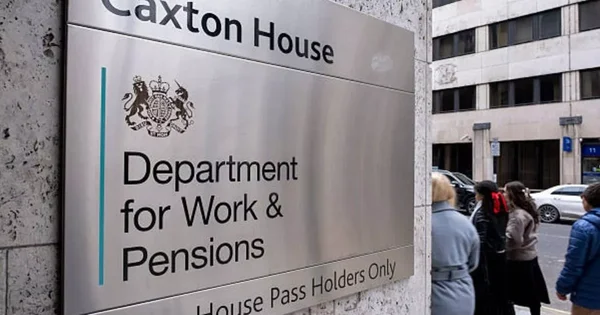
Lenders are becoming increasingly cautious when it comes to buy-to-let (BTL) mortgage lending, implementing stricter affordability checks as costs climb across the board.
For landlords whose fixed-rate deals are coming to an end, the tightening of lending criteria could make refinancing significantly harder. With higher interest rates and elevated maintenance costs, the buy-to-let market is facing mounting pressure that may reshape the landscape for investors and small-scale landlords alike.
This shift follows recent trends in monetary policy and inflation, which have made borrowing more expensive and property management costlier. Experts warn that without careful planning, landlords could see profits squeezed or worse, struggle to secure a new mortgage altogether.
In this article, we examine the latest developments in buy-to-let mortgage regulations, assess the risks for property owners, and outline what steps landlords can take to navigate this evolving financial environment.
Tighter Lending Criteria Shake Up the Market
Lenders are revisiting their affordability models to ensure landlords can cover mortgage payments in a high-interest rate environment. Most banks now require landlords to demonstrate a rental coverage ratio of at least 125% to 145% of the mortgage interest. Some have gone further, asking for stress tests that simulate interest rates as high as 8%.
This marks a significant departure from previous lending models, which were far more lenient during the low-interest era. According to industry analysts, many landlords, especially those with smaller portfolios are finding the new standards difficult to meet.
Landlords with Expiring Deals at Risk
The changes in affordability rules come at a challenging time for landlords whose fixed-rate mortgage deals are nearing their end. Many who secured favourable rates before the Bank of England’s rate hikes are now being forced to refinance in a less forgiving market.
If landlords fail to qualify under the new criteria, they could end up on their lender’s Standard Variable Rate (SVR), which often carries significantly higher interest. This can lead to an immediate spike in monthly payments, diminishing rental profits or even turning properties into loss-making assets.
Impact of Rising Interest Rates
The Bank of England’s base rate currently sits at 5.25%, a stark contrast to the historic lows of just a few years ago. This jump has had a knock-on effect on all borrowing products, including buy-to-let mortgages. Average buy-to-let rates are now around 6%, with some specialist lenders offering products upwards of 7%.
These higher borrowing costs are causing many landlords to reassess the viability of expanding their portfolios. Some are even contemplating selling off parts of their property holdings to reduce exposure to debt.

Stress Testing: A New Normal
One of the most significant changes is the increased use of stress testing by lenders. These tests assess whether borrowers can still meet repayments if interest rates rise further. While once considered a precautionary measure, they are now central to the approval process.
Mortgage brokers report that stress test thresholds have increased across the board, with lenders assessing affordability at interest rates ranging from 7% to 8.5%. This creates a higher barrier to entry for new landlords and makes refinancing more complex for existing ones.
What Can Landlords Do?
For landlords struggling to meet the new affordability checks, there are still some options. Speaking with a mortgage adviser early can help identify more flexible lenders or alternative products. Some may benefit from switching to interest-only loans or extending their mortgage term to reduce monthly costs.
It’s also essential to review property income and expenses. Increasing rent (within legal and market limits) or reducing operating costs can help improve the rental coverage ratio and make a stronger case to lenders.
The Broader Implications for the Rental Market
Tightening mortgage rules could have knock-on effects across the housing market. If landlords are unable to refinance or choose to exit the market, rental supply could fall, pushing up rents further in an already strained rental sector.
Moreover, this shift may deter new entrants to the market, consolidating property ownership among wealthier landlords with the capital to withstand tougher conditions. Some housing advocates worry this could exacerbate inequality in property access and investment opportunities.

Conclusion
The tightening of buy-to-let affordability checks marks a pivotal moment for landlords. As interest rates and stress test thresholds rise, refinancing has become more challenging, especially for those with expiring deals.
While there are still viable paths forward, the shifting landscape demands proactive financial management and early advice. The broader impact on the rental market may unfold gradually, but for now, landlords should prepare for more scrutiny and adapt quickly to changing conditions.
Frequently Asked Questions
Why are buy-to-let mortgage checks getting stricter?
Affordability checks are being tightened due to rising interest rates and economic uncertainty. Lenders want to ensure landlords can manage higher repayments.
What is a rental coverage ratio?
It’s the ratio of rental income to mortgage payments. Lenders typically require it to be between 125% and 145% to approve a mortgage.
What happens if I don’t pass the new checks?
You may be moved to your lender’s SVR, which can significantly increase your monthly payments. Alternative lenders or loan terms may help.
How can I improve my chances of refinancing?
Start early, work with a mortgage broker, and explore increasing rent or reducing costs to improve affordability.
Will this affect renters?
Possibly. If landlords exit the market or pass on costs, it could reduce supply and push up rents in certain areas.









